Volkswagen Atlas SE Vs SEL: Which Trim is Right for You?

In the sea of three-row SUVs, the Volkswagen Atlas stands out as one of the larger options. With adult-size space in all three rows, it’s a great choice for families of all ages. Better still, for the 2024 model year, the Atlas is all-new.
If deciding this will be your next family hauler, it’s important to select the right trim level that will fit your needs, wants, and budget. Currently, Volkswagen breaks the Atlas down into two main trim families: the SE and the SEL. From there, each trim has three sub-models. We’ll cover all six options in this article to help you decide if the SE or SEL is the right trim for you.
Exterior Style
There isn’t a major difference in terms of the exterior look between the two models. The look of the Atlas has changed for the 2024 model year, but it’s a minor update. Those familiar with Volkswagen's large three-row SUV will instantly recognize the new Atlas.
The SE gets standard LED head lights and taillights, as well as black roof rails and 18-inch alloy wheels wearing 245/60R18 tire. The SEL adds a few bits of visual and functional appeal with an illuminated front logo and lightbar, silver roof rails, a panoramic sunroof, 20-inch alloy wheels with 255/50R20 tires, and a trailer hitch receiver.
Interior Style and Space
Inside, things once again to not differ all that much by trim. That’s because all versions of the Atlas receive a 12.0-inch infotainment touchscreen and the digital cockpit pro with a 10.25-inch display.
Both trims come standard with a middle row bench seat, while the regular SEL can be optioned with captain’s chairs. To get captain's chairs in the regular SE an additional package has to be added as well as the chairs themselves. While on the topic, the SE’s seats are swathed in leatherette while the SEL uses real leather on all the seats.
Physical space inside is the same between the two trims. Front seat passengers enjoy 41.3-inches of headroom, while the middle row gets 40.4-inches and third row a very respectable 38.3-inches. Legroom is a generous 41.7-inches up front, with a usable 37.6-inches and 33.7-inches in the second and third rows.
Cargo capacity is on the higher side for this class, with an available 20.6 cubic feet of space behind the third row. Fold some seats down and capacity grows to 55.5 cu ft behind the second row and 96.6 cu ft behind the first row.
Powertrain and Towing
For 2024, the Atlas now uses just one powertrain for all models. Under the hood is a 2.0-liter turbocharged four-cylinder that makes 269 hp and 273 pound feet of torque. It can send power to either just the front wheels or all four wheels. Regardless if it’s front-wheel drive or all-wheel drive, the Atlas uses an eight-speed automatic transmission.
Despite the generous interior space, the Atlas is not all that heavy in a class-relative sense. Front-wheel drive models began at a weight of 4,343 pounds, while all-wheel drive models tip the scales at 4,517 lbs. Unlike a lot of competitors, regardless of which drivetrain is selected, the Atlas can tow up to 5,000 lbs when properly equipped.
Fuel Economy
Fuel economy is dependent on trim as the larger wheels and greater weight on the SEL lower the vehicle’s efficiency. Front-wheel drive Atlas SE models are rated for 20 mpg city in the city and 27 mpg on the highway. Add all-wheel drive and efficiency drops a bit to 19 mpg city and 26 mpg highway.
With the SEL, the Atlas only comes with all-wheel drive. City fuel economy figures match the SE, rated at 19 mpg city. But on the highway, fuel economy suffers a bit more with an official figure of 25 mpg highway. If the Peak Edition (more on that later) is selected on either trim, the Atlas returns the worst official economy, with ratings of 18 mpg city and 24 mpg highway.
Safety
As a modern family-first SUV, the Atlas comes standard with a lot of safety features. The SE includes Volkswagen’s safety technology suite called IQ.Drive. It includes front assist, blind spot monitoring, rear cross traffic alert, adaptive cruise control, lane assist, and more.
The SEL trims up the safety game a bit by including park distance control, high beam assist, predictive adaptive cruise control, and more. Some of these features can be added to the SE through option packages.
Tech and Features
The Atlas comes very well equipped even with the entry-level SE trim. There are features standard that some competitors don’t offer until higher trim levels, if at all. These include heated and ventilated front seats, a heated steering wheel, wireless phone charging, as well as wireless Apple CarPlay and Android Auto. Other standard equipment in the SE entails push-button start, three-zone climate control, rain sensing wipers, a power driver’s seat, six-speaker sound system, and leatherette wrapped steering wheel.
Stepping up to the SEL adds heated windshield washer nozzles, remote engine start, ambient lighting, a power front passenger seat, a driver’s memory seat, heated second row seats, rear sunshades, a power lift gate, and a head-up display.
Option Packages
Although the SE and SEL are the two main trims, as mentioned previously, there are sub-trims. Looking at the SE first, there is the optional Tech package that adds a lot of equipment found on the SEL. The trailer hitch, illuminated logo and lightbar, silver 20-inch alloy wheels with 255/50R20 tires, remote start, rear sunshades, power liftgate, park distance control, and more are all part of the package. As well, the panoramic sunroof, 20-inch black wheels, and second row captain’s chairs can all be added for additional costs.
The other SE package is the Peak Edition that builds off the SE w/ Tech trim. It further adds unique bumpers front and rear, black and silver side sills, and a black and silver rear diffuser with chrome exhaust bezels. As well, there are blackout details including the “X” design in lower fascia, grille, mirror caps, window surround, and tailgate strip. The panoramic sunroof is included free of charge as well as 18-inch alloy wheels with all-terrain tires. The only additional cost items are the captain’s chairs.
With the SEL, there are also two main trim packages available. The first is the Peak Edition which adds all the exterior upgrades found on the SE Peak Edition as well as black roof rails. But, when adding the Peak Edition do the SEL, it does lose some features. The second row heated seats and leather seating surfaces in regular SEL models are scrapped as easier to clean leatherette is used instead.
The bigger option package on the SEL is the Premium R-Line. As the top trim in the Atlas range, it comes fully loaded with items like 21-inch alloy wheels wearing 265/45R21 tires, a leather-wrapped steering wheel, diamond stitched leather seats, 12-speaker Harman Kardon sound system, and 360-degree around view camera. Like all the packages listed here, it can be had with captain’s chairs for an addition price.
Pricing
Pricing for the Volkswagen Atlas starts at $39,075 (all prices include destination charges) for the SE with front-wheel drive. Add all-wheel drive and the SE price goes up to $40,975. The SE w/ Tech costs $43,015 for front-wheel drive models and $44,915 for those with all-wheel drive.
The Peak Edition of the Atlas is $47,905 for the SE w/ Tech, or $51,785 for the SEL. The Pike Edition only comes with all-wheel drive.
The SEL rings in at a starting price of $49,795, while the top trim SEL Premium R-Line comes in at $53,805.
The Verdict
The Volkswagen Atlas SE is unlike many entry-level trims. It is quite well-equipped and rivals many competitors’ mid-trim offerings. It’s our choice for most consumers as it should offer most of what they need.
If a more premium vehicle is sought after, the regular SEL should do just fine. Although it doesn’t have quite as many niceties of the Premium R-Line, the cost savings justify the sacrifice of those few options.
Become an AutoGuide insider. Get the latest from the automotive world first by subscribing to our newsletter here.

A 20+ year industry veteran, Mike rejoins the AutoGuide team as the Managing Editor. He started his career at a young age working at dealerships, car rentals, and used car advertisers. He then found his true passion, automotive writing. After contributing to multiple websites for several years, he spent the next six years working at the head office of an automotive OEM, before returning back to the field he loves. He is a member of the Automobile Journalists Association of Canada (AJAC), and Midwest Automotive Media Association (MAMA). He's the recipient of a feature writing of the year award and multiple video of the year awards.
More by Mike Schlee































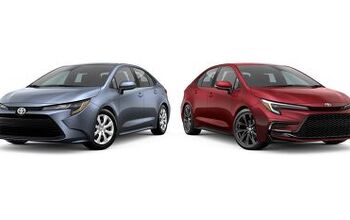

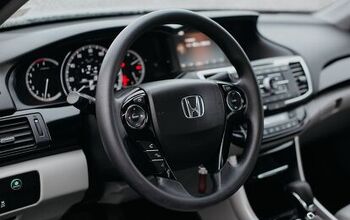



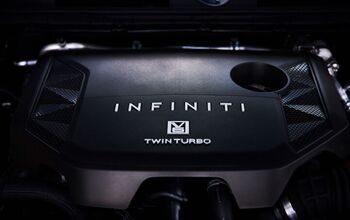

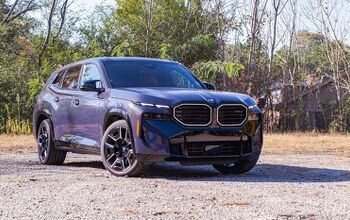

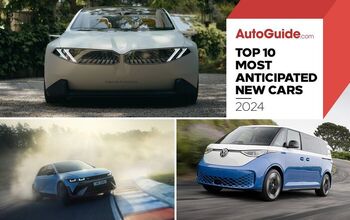

Comments
Join the conversation
want a 6 with turbo......that it sold..
cx 70 and 90 have 6s and get better mpg, we live in the Mountains, drove the vw 4 gurr..